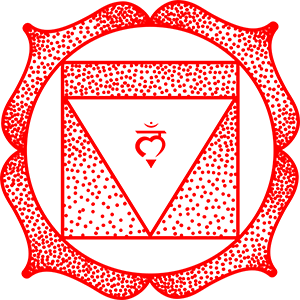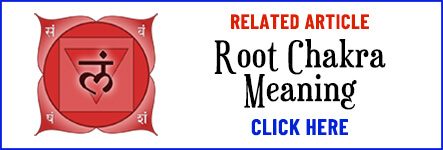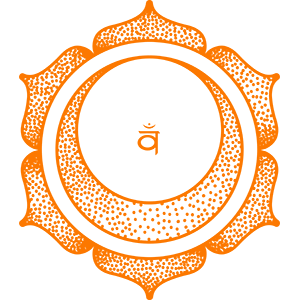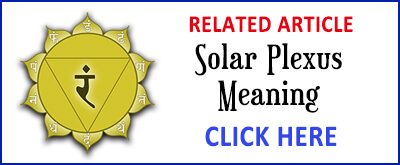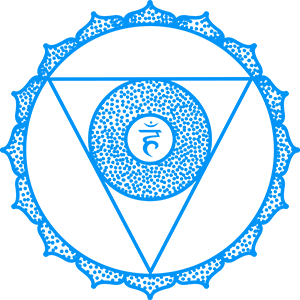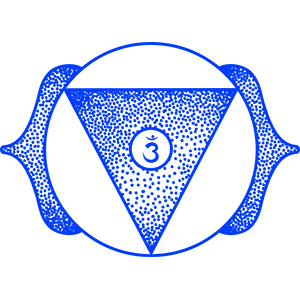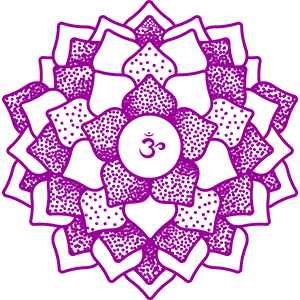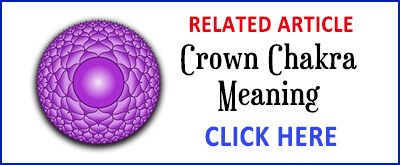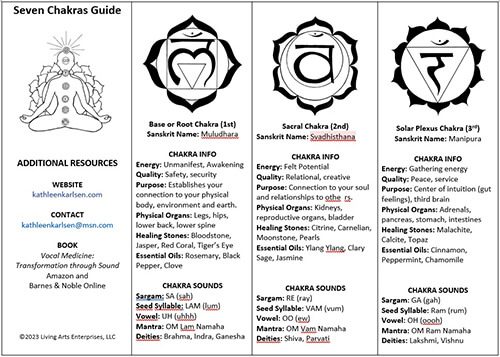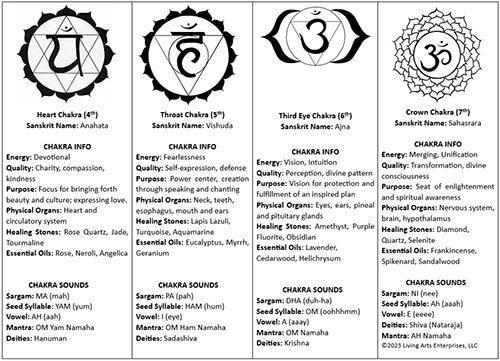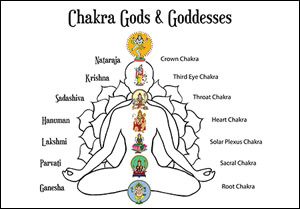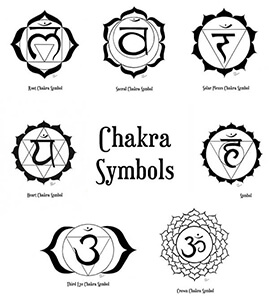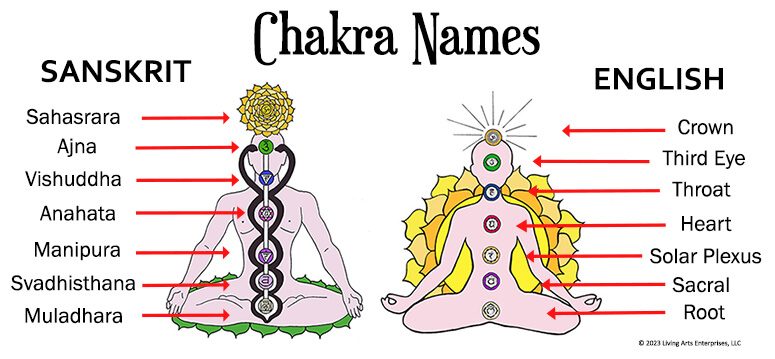
Chakra Names and Sanskrit Meanings
Definitions of the 7 Chakras Names
The Sanskrit names of the chakras reveal their roles in the body on physical, psychological, spiritual, and emotional levels. Accordingly, the English and the seven chakras names describe the unique aspects of each chakra. The Sanskrit chakra names come from ancient Eastern traditions.
Table of Contents
Share this page with a friend!
Definition of the 7 Chakras Names
According to ancient manuscripts and teachings, the chakras are spiritual centers that direct the flow of energy in the human body. The chakras give context for many practices that have become mainstream in the West such as yoga, acupuncture, and meditation.
Ways to Name the 7 Chakras
Understanding the chakras and their names helps to make the unseen world of energy become more tangible. Knowing where the chakras are placed also shows how the spiritual body connects to the physical body. Finally, there are several ways to define the 7 chakras names:
- The position of the 7 chakras
- The role of the 7 chakras in the physical body
- The impact of the 7 chakras on the psychological level
- The impact of the 7 chakras on emotional levels
Moving from the Root to the Crown
The focus and purpose of each chakra revealed in the chakra names are given below in order from the lowest chakra to the highest. Therefore, this guide begins with the root chakra (situated near the organs of elimination and reproduction).
We then move upwards to the crown chakra (at the top of the head). The video below is a quick pronunciation guide to the Sanskrit names of the chakras. Thanks to Jake Fleming at Flick the Fly Productions for the pronunciations.
Watch over 200 videos on our YouTube channel!
Muladhara = Root Chakra
“Mula” means “root” and “adhara” means “base or support”
Svadhisthana = Sacral Chakra
Svadhishthana means “one’s own abode”
Manipura = Solar Plexus Chakra
Manipura means the “city of jewels”
Anahata = Heart Chakra
Anahata means “unhurt, unstruck, unbeaten, pure or clean”
Vishuddha = Throat Chakra
Vishuddha means “especially pure”
Ajna = Third Eye Chakra
Ajna means “perceive,” “authority” or “command”
Sahasrara = Crown Chakra
Sahasrara means “thousand-petaled”
7 Chakras Names Pronunciation
There are sixteen vowels, nine intermediate sounds, and twenty-five consonants in Sanskrit. Some English approximations are not exact replications of the Sanskrit sounds. An “r” is rolled, sometimes only slightly and sometimes more extensively. The following are examples of some basic pronunciation rules for Sanskrit vowels:
- Short “a” is pronounced “uh” like the “a” in about
- Long “a” is pronounced “ah” as in father
- Short “i” is pronounced like the “i” in it
- Long “i” is pronounced “ee” as in seat
- An “r” is rolled, sometimes only slightly
Related Article: Root Chakra Meaning
Root Chakra Names
Muladhara Chakra, Root Chakra or Base Chakra
The lowest chakra in the body has several chakra names: root chakra, base chakra, and Muladhara chakra. The root chakra is at the base of the spine. The root or base chakra establishes your connection to the earth and to the “roots” embedded in your ancestral history. In terms of Sanskrit chakra names, Muladhara is a combination of “mula” meaning “root” and “adhara” meaning “base or support.”
Kundalini Energy in the Root Chakra
The root chakra is the place of the Divine Mother or the feminine energy. This energy, known as the kundalini in the East, rises to meet the masculine energy of the crown chakra. Another English term for this chakra is the “base chakra.” The base chakra is the foundation upon which the other chakras rest, similar to the foundation of a house.
Symbol of the Root Chakra
The Hindu symbol for the base chakra includes a square as a stable geometric form. This solid base represents the four directions, four seasons and the earth element. The symbol of the root chakra also includes a lotus flower with four petals. The four petals of the base chakra are generally viewed as mind, intellect, consciousness and ego. Learn more about Chakra Symbols.
Personal and Ancestral History
The root chakra can also be seen as connected with your personal and ancestral history. These are the roots that can either bind you to the earth in a negative sense or give you a strong base and presence in the world. This chakra is associated with establishing connection and survival:
- Connection to your physical body
- Connection to the earth
- Connection to the environment
- Survival instincts for food and shelter
- Safety, comfort and belonging
Related Article: Sacral Chakra Meaning
Sacral Chakra Names
Svadhisthana, Sacral Chakra, or Seat of the Soul Chakra
The second chakra has three different chakra names: the sacral chakra, the seat of the soul chakra, and the Svadhisthana Chakra. In terms of the Sanskrit names of chakras, Svadhisthana means “one’s own abode.” The sacral chakra is focused on relationships. This includes one’s relationship with oneself.
Sacral Chakra and Related Organs
The organs associated with the sacral chakra are the reproductive organs, the kidneys and the bladder. The sacral chakra is said to house the unconscious. This is sometimes symbolized as the ocean. The sacral chakra is also the seat of creation, called the seat of the soul.
Reproduction and Communication
The sacral chakra represents the spiritual potential that goes beyond the survival instincts of the root chakra. The sacral chakra is the realm of communication, exchange and finances. In addition to being the center of reproductive ability, the sacral chakra is also the seat of artistic creation.
Deities Connected to the Sacral Chakra
Two of the deities associated with the sacral chakra are the goddess Parvati and the god Vishnu (an incarnation of Krishna). Parvati is the Hindu goddess of fertility, love and devotion as well as divine strength and power. She is the gentle and nurturing aspect of the goddess energy and the consort of Shiva. Learn more about Chakras and Deities.
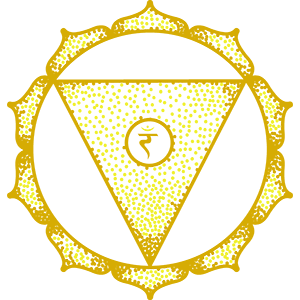
Related Article: Solar Plexus Chakra Meaning
Solar Plexus Chakra Names
Manipura or Navel Chakra
The third chakra names are the solar plexus chakra or the Manipura Chakra. The name Manipura translates as the “city of jewels.” “Mani” means “gem” while “pura” means “city.” When purified, this is the chakra of inner peace. Other chakra names in English include the navel chakra. The solar plexus chakra is located at the naval, center of intuition (a gut feeling). This is the chakra where we get a gut feeling about people, places and events.
Mastery of the Solar Plexus
Mastery of the solar plexus chakra is largely the mastery of emotions. This often leads to success in life on many levels. Thus, the solar plexus chakra is associated with wealth and abundance. This is also the place of transformation: food is digested here as well as less tangible ideas.
Symbol of the Solar Plexus Chakra
The solar plexus chakra is connected to both service and desires. The solar plexus is symbolized as a ten-petaled lotus that resembles a sun. The fire of the sun is similar to the physical energy needed to digest and transform food. Each petal corresponds to a specific Sanskrit letter and the overcoming of a negative tendency. Learn more at Chakra Symbols. Find more about the solar plexus chakra in our other Chakra Resources.
Related Article: Heart Chakra Meaning
Heart Chakra Names
Anahata or Threefold Flame
The chakra names for the fourth chakra are the heart chakra and the Anahata Chakra. The heart chakra is the focus of love and devotion. The heart expresses charity, compassion, and kindness. In addition, the heart is a focus for beauty and culture. The heart brings the awareness of community and connection. The Sanskrit name “Anahata” means “unhurt, unstruck, unbeaten, pure or clean.”
Heart Flame in Brahma’s Cave
The heart chakra is believed to house an inner chakra or chamber where the spark of life resides. In the Western tradition, this is known as the three fold flame or the inner chamber of the heart. In the East, this is sometimes called Brahma’s Cave.
Physical Organs and the Heart Chakra
The physical organs associated with the heart chakra are the heart itself, the circulatory system and the lungs. The heart chakra is symbolized by a twelve-petaled lotus with interlocking triangles in the center.
Related Article: Throat Chakra Meaning
Throat Chakra Names
Vishuddha or Power Chakra
The fifth chakra is the throat chakra or the Vishuddha chakra. In regards to Sanskrit names of chakras, Vishuddha means “especially pure.” The throat chakra is connected to creativity and self-expression as well as the actions of speaking, chanting and singing. The throat and thyroid are where emotions, intentions, praise and criticism are expressed.
Chakra of Vulnerability and Strength
The throat chakra is the place where energy is qualified through sound for blessing or bane with every word spoken. Thus, the throat is the place of greatest vulnerability and greatest strength. The throat chakra and thyroid are also connected to creative expression.
Throat Chakra Symbol
The throat chakra is depicted as having sixteen petals. In the center is a triangle pointing downward and a white circle representing akashi or ether. This chakra is associated with the neck, the esophagus, the teeth, the mouth and the ears.
Throat Chakra and the Body
The thyroid gland plays a major role in metabolism, growth and vital body functions such as heart rate and body temperature. Chanting is an ideal tool for supporting the health of the thyroid gland since the vibrations of chanting and singing pass directly through the thyroid.
Related Article: Third Eye Chakra Meaning
Third Eye Chakra Names
Ajna or Psychic Chakra
The sixth chakra is called the third eye in English, the seat of spiritual vision. The third eye is associated with perception, intuition and insight. The Sanskrit name for this chakra is the Ajna Chakra, which means to “command” or “perceive” or “authority.” The third eye, usually associated with clairvoyant abilities, can be developed with yoga, meditation and the practice of chanting.
3rd Eye and the Pineal Gland
The vibrations of chanting and singing are felt in the skull and can be consciously directed to the third eye and pineal gland. Other physical organs associated with the third eye are the eyes, the ears and the pituitary gland.
Characteristics of the Third Eye
The third eye chakra is the door to prophetic vision, psychic intuition and seeing the future. This sacred spot is sometimes marked in the East on the forehead by the red dot known as the bindi. The third eye is symbolized as a transparent lotus flower with two white petals representing the ida and pingala (mystical spiritual channels). The ida and pingala are sometimes associated with the pineal and pituitary glands.
Related Article: Crown Chakra Meaning
Crown Chakra Names
Sahasrara or the Thousand-Petal Lotus
The seventh chakra is the crown chakra, the seat of enlightenment, known in Sanskrit as the Sahasrara chakra. “Sahasrara” means “thousand-petaled.” In English, the crown chakra is a reference to the top of the head. The crown chakra is related to god-consciousness (samadhi) and the transforming powers of the divine.
Crown Chakra and the Body
On the physical level, the crown chakra is related to the nervous system and the brain. Some people who believe that human hair is an extension of the nervous system. Hair has cultural significance around the world. Shaving one’s head can be a sign of renunciation or a sign of accepting the authority of another over your life.
Chakra-Related Video Shorts
Chakras as Keys to Health and Happiness
Although most sources describe seven major chakras, there may be many more energy centers in the body. For example, some systems include eight chakras. These systems add a sub-chakra for the heart. This is called the secret chamber of the heart or the cave of the heart.
Beyond the 7 Chakras Names
Other systems include twelve chakras. This includes the seven major chakras plus chakras in the hands, feet and side. Detailed systems that relate the chakras to acupuncture meridians may include one hundred forty-four chakras or more.
Clearing the Chakras
All life experiences are stored in one or more chakra. Clearing the chakras of negativity is a process that can be accomplished in many ways. Tools include meditation, affirmations, mantras, yoga, dietary practices, and self-examination.
FREE Downloadable Chakra Chart
Includes 7 Chakras Names, Chakra Info & Chakra Sounds
Click for Chakra Chart PDF
Download artwork on our FREE STUFF page!
More Chakra Resources
Chakras and Musical Notes: Chakras and musical notes have been paired in a number of ways. Learn about both Western and Eastern systems.
Chakra Names: Chakra names reveal the roles of the chakras in the body on psychological, spiritual and emotional levels. Includes explanations of English and Sanskrit chakra names.
Chakra Flowers: Chakra flowers offer unique symbolic meaning for each of the seven major chakras. Flowers are among the oldest spiritual symbols, revealing the meaning of each chakra.
FREE download: Full set of the 7 chakra symbols.
Author Kathleen Karlsen
Kathleen Karlsen is a musician, artist, writer and speaker. She is the author of two books (Flower Symbols and Vocal Medicine) and over 200 articles. Kathleen, her husband Andrew, and their five children live in Bozeman, Montana. More about Kathleen Karlsen.
CHAKRAS NAMES ARTICLE SUMMARY
The 7 chakras names reveal the roles of the chakras in the body. The chakras also function on psychological, spiritual and emotional levels. The importance of each chakra is covered. This article also includes a video that serves as a quick pronunciation guide to the 7 chakras names.

